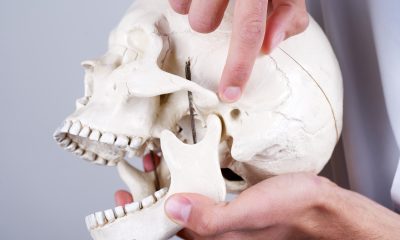As you can see, a diagnosis of TMJ is not a diagnosis at all, but a description of anatomy. Between the two bones is a unique disc made of fibrocartilage that is attached to the ball (condyle) of the lower jaw and functions to absorb shock (force), allow for smooth movement, and keep the bones apart. This joint is one of the most complex joints in the body due to the fact that it is a bilateral joint and functions first by rotating and gliding (translating) when you talk, chew, yawn and swallow.
TMJD is a disease process affecting the TMJs, chewing muscles, supporting muscles of the head and neck, and the way the upper and lower teeth meet.
33-75% of people have at least one symptom of TMJ. Between 5 and 15 percent of people in the United States experience pain associated with TMJD. Women are more likely than men to develop TMJD.

